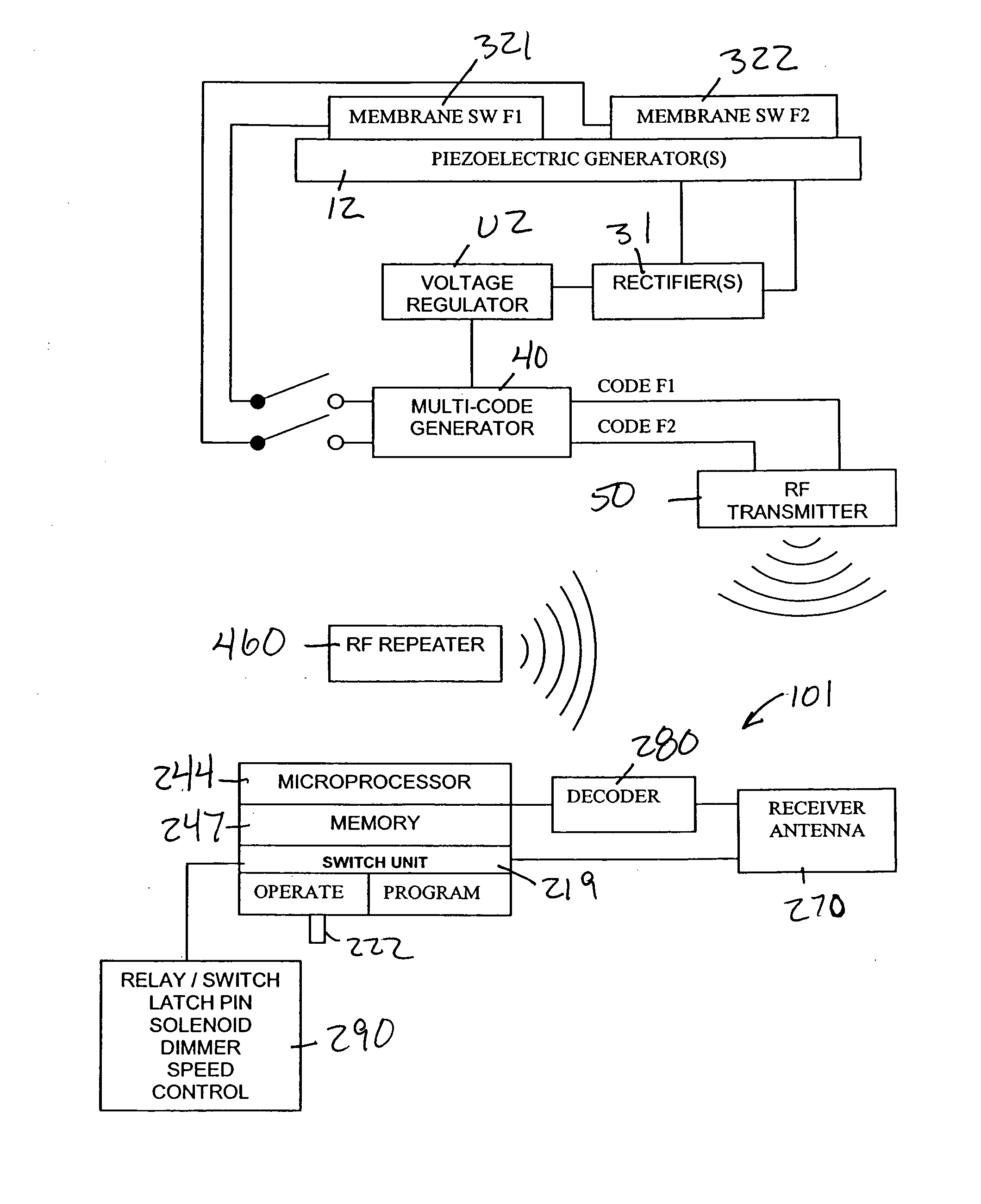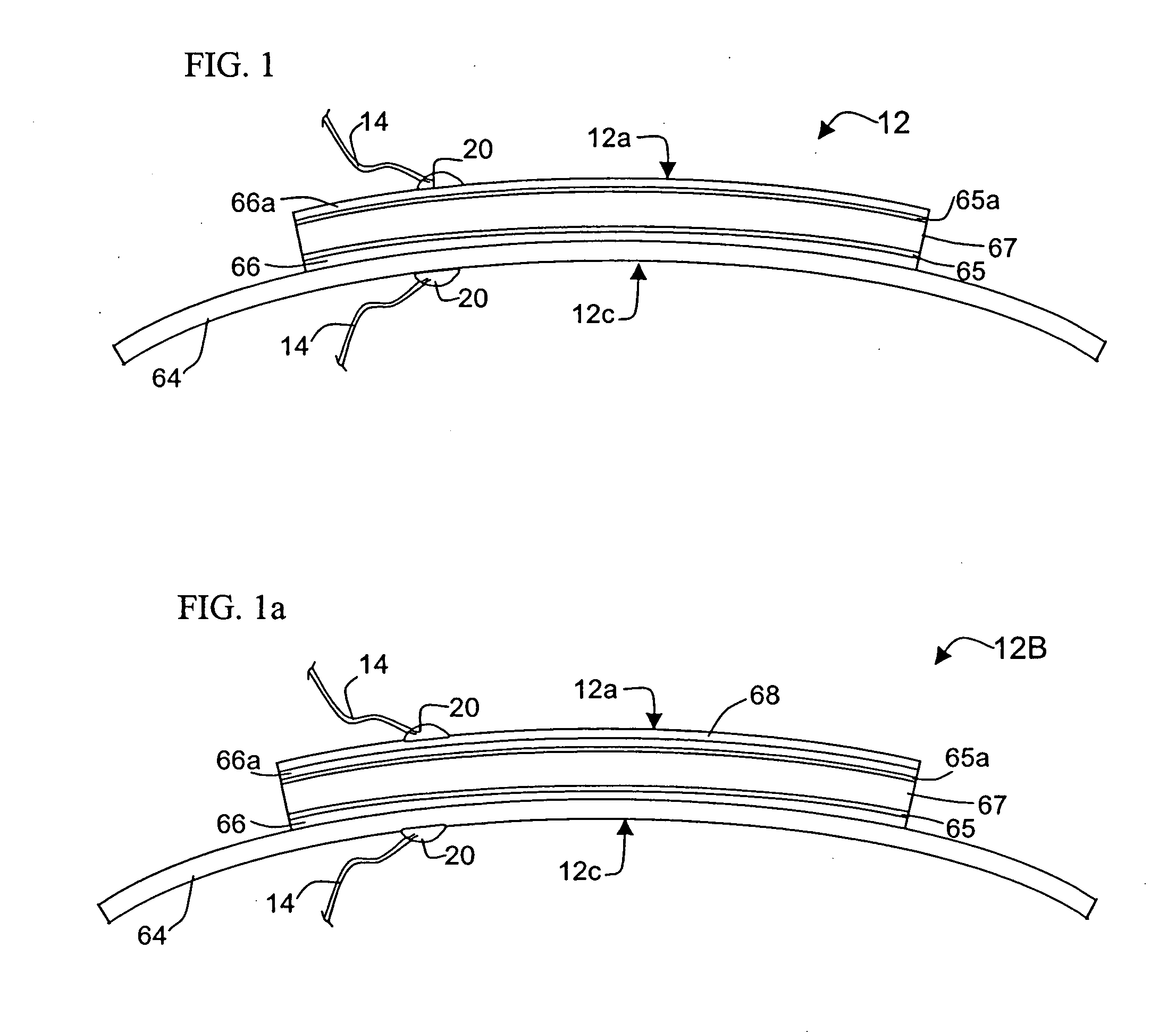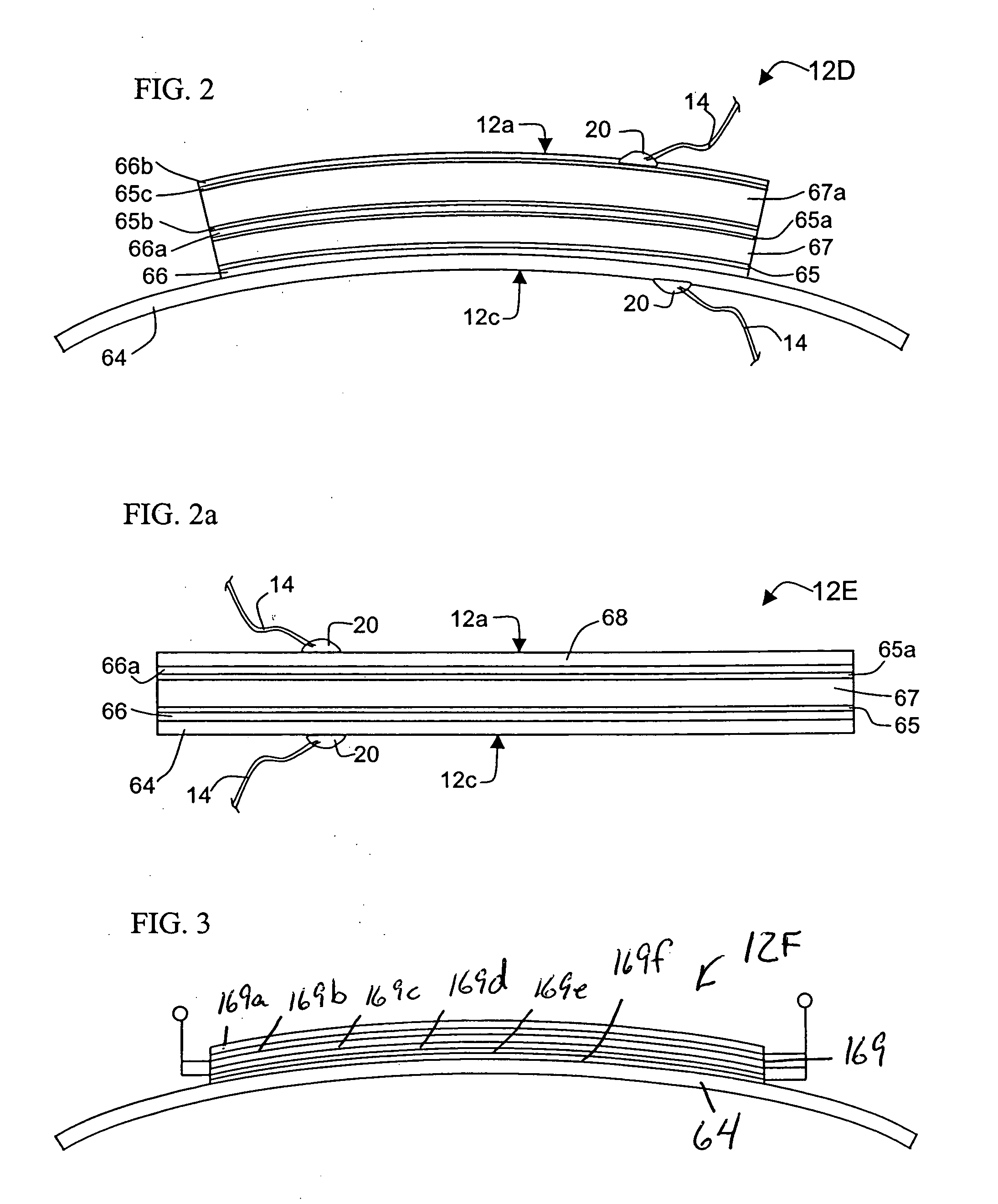Lighting fixture with low voltage transformer and self-powered switching system
a low-voltage transformer and switching system technology, applied in the integration of power network operation systems, generators/motors, pulse techniques, etc., can solve the problems of cable kinks, tangles or binds, difficulty in drilling holes and mounting switches and junction boxes,
- Summary
- Abstract
- Description
- Claims
- Application Information
AI Technical Summary
Benefits of technology
Problems solved by technology
Method used
Image
Examples
Embodiment Construction
Electroactive Generator
[0086]Piezoelectric and electrostrictive materials (generally called “electroactive” devices herein) develop an electric field when placed under stress or strain. The electric field developed by a piezoelectric or electrostrictive material is a function of the applied force and displacement causing the mechanical stress or strain. Conversely, electroactive devices undergo dimensional changes in an applied electric field. The dimensional change (i.e., expansion or contraction) of an electroactive element is a function of the applied electric field. Electroactive devices are commonly used as drivers, or “actuators” due to their propensity to deform under such electric fields. These electroactive devices when used as transducers or generators also have varying capacities to generate an electric field in response to a deformation caused by an applied force. In such cases they behave as electrical generators.
[0087]Electroactive devices include direct and indirect m...
PUM
 Login to View More
Login to View More Abstract
Description
Claims
Application Information
 Login to View More
Login to View More - R&D
- Intellectual Property
- Life Sciences
- Materials
- Tech Scout
- Unparalleled Data Quality
- Higher Quality Content
- 60% Fewer Hallucinations
Browse by: Latest US Patents, China's latest patents, Technical Efficacy Thesaurus, Application Domain, Technology Topic, Popular Technical Reports.
© 2025 PatSnap. All rights reserved.Legal|Privacy policy|Modern Slavery Act Transparency Statement|Sitemap|About US| Contact US: help@patsnap.com



